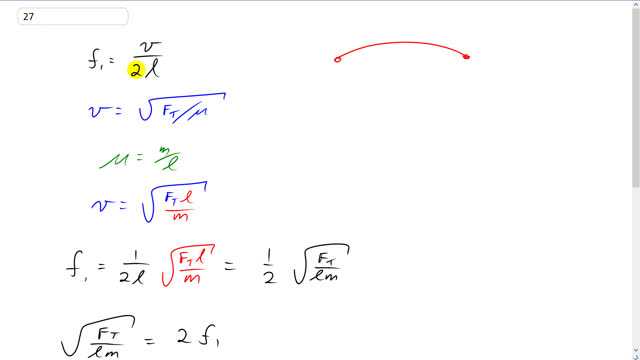
The A string on a violin has a fundamental frequency of 440 Hz. The length of the vibrating portion is 32 cm, and it has mass 0.35 g. Under what tension must the string be placed?

In order to watch this solution you need to have a subscription.
This is Giancoli Answers with Mr. Dychko. The fundamental frequency on a violin string wave that's has a node at both ends is gonna be the wave speed divided by 2 l. And the speed of the wave propagating along the string, this is not the speed of sound by the way, this is the speed of the string, you know, the string itself is going to be a wave, and that wave speed will be the square root of the tension in the string divided by the strings mass per unit length. And so this mass per unit like μ is mass divided by length. And so we're told the mass of the vibrating portion and we're told its length as well. So, we can calculate this μ. But I've substituted into this formula for speed and this is tension force divided by μ. So, instead of dividing by a fraction I'm multiplying by its reciprocal. So, that's why you see l over m here. So, I'm taking tension force multiplied by the reciprocal of μ. So, FT or times l over m. So, then that gets substituted back into this formula for the fundamental. So, that's 1 over l times v, and that square root of FT l over m. And this square root l on top there and this l on the bottom here are combined to make an l inside the square root in the bottom. So, this is fundamental as 1/2 times square root tension divided by l times m. So... We can multiply both sides by 2 and you get the square root tension over l m equals 2 times the fundamental. And then square both sides, you get FT over l m equals 4 fundamental frequency squared. And then multiply both sides by l m. And you have the tension force is 4 f1 squared times length times mass. So, that's 4 times 440 hertz squared times 32 times 10 to the minus 2 meters and then multiplied by 0.35 grams which is gonna be times 10 to the minus 3 kilograms. And that gives about 87 newtons of tension.